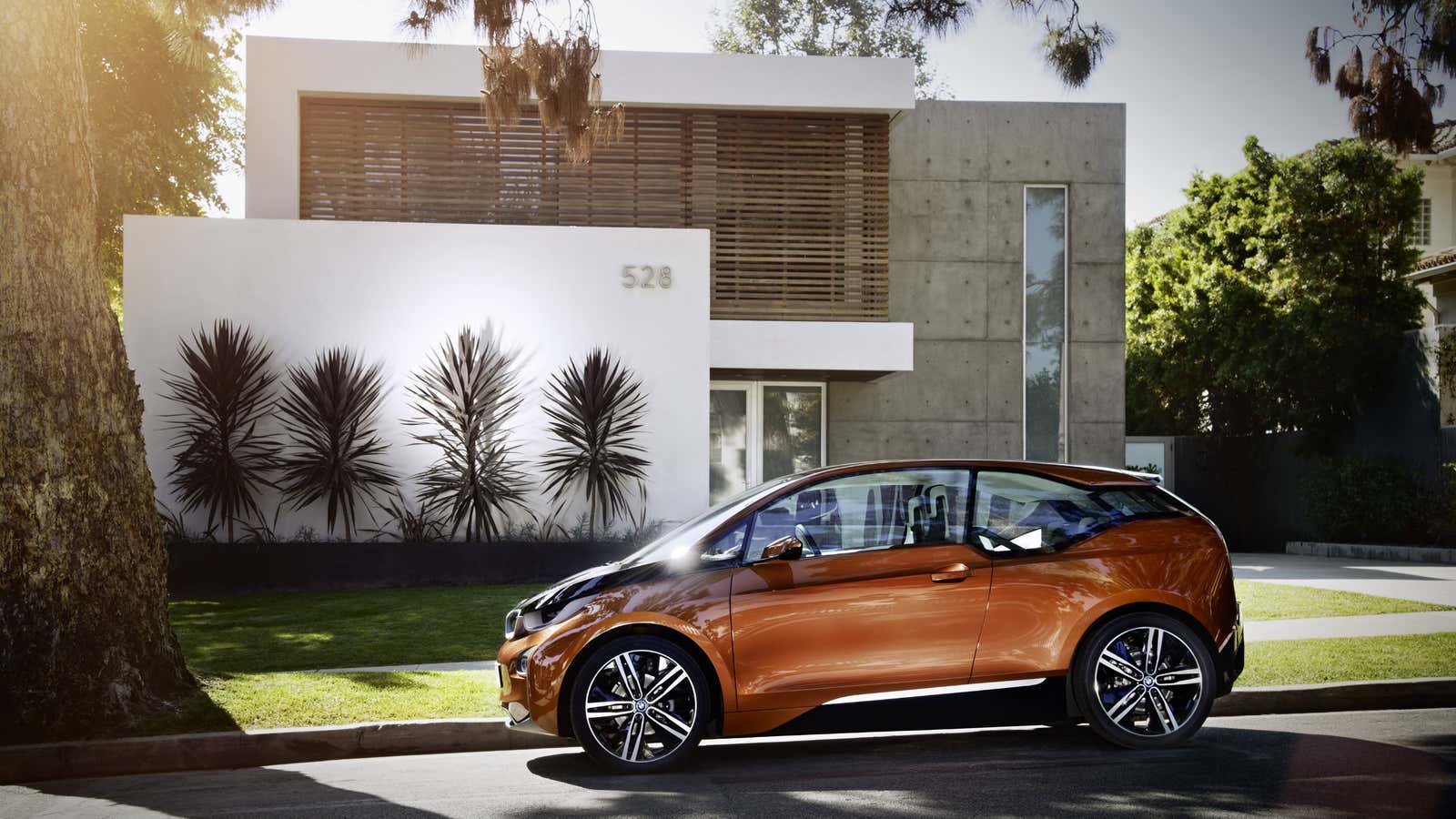BMW plans to offer buyers of its forthcoming electric i3 vehicle the option of a gas-powered loaner BMW should they need to make a trip that would exceed the vehicle’s approximately 100-mile range. The company expects that drivers will make nine of out 10 trips with the concept model, which it touts as its “megacity car,” within that 100-mile range, but wants to offer the option as a way to help future owners not feel locked in to one mode of driving only. This is particularly critical, as the car will reportedly carry a $50,000 sticker price when it hits dealers next year.
Given the recent blow up between electric car maker Tesla’s Elon Musk and the New York Times over the actual range of the Tesla S, BMW’s move seems a prudent PR step. But it shouldn’t be seen as unusual among major car manufacturers, a number of which are working on variations of “mobility as a service” models that go far beyond selling a car and collecting after-market service revenues on maintenance, for example.
Both Ford and Honda have been looking at changing the ecosystem around electric vehicle ownership. The former announced a partnership at CES in January called “MyEnergi Lifestyle” along with Whirlpool, Eaton, Infineon, SunPower and digital thermostat maker Nest Labs to help consumers shape an overall home electricity management strategy that can lessen the impact of home vehicle charging on power bills. Meanwhile, Honda will offer $65 million in financing for home solar panels—through Musks’s Solar City venture—again to lighten the load a new electric vehicles (EVs) might place on the power grid and household budget. Even the Pentagon is looking at different ways for EVs to potentially pass stored power back to the grid.
These kinds of partnerships—positioning next generation vehicles at the center of a system of services instead of a one-off product—would have been unthinkable even five years ago. But as the big car companies stare at the major transition in front of them, and try to improve returns on their own massive investments into alternative power sources, we are likely to see more of these sorts of announcements. They know the next decade will be spent selling vehicles to a tight-fisted Millennial generation, skeptical of servicing car loans. This cohort has been accustomed to interacting with products as increasingly interconnected systems of services. A $30,000 price tag for an EV might not look so bad if it comes with a suite of bundled services, access to other vehicles and modes of transport, and lifetime upgrades.
